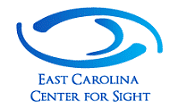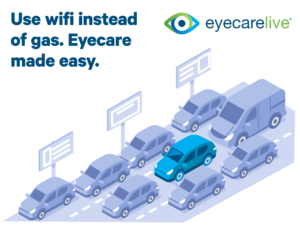Wow! what a meeting. Great Venue, Great Format, Fantastic panel of Ophthalmic surgeons. Highly recommended to all Ophthalmologist and Eyecare providers. This meeting presents new groundbreaking techniques, new takes on current techniques as well as those still under study. The interactive case format for complex surgical problems was outstanding. All the speakers were highly accessible and very receptive to any questions.
On to the News.
CXL (cornea collegen crosslinking) studies for ectiasia and Keratoconus
Bill Trattler, M.D and Eric Donnenfeld related their findings of their studies, overall there is great success in halting corneal thinning, there is even some regression. The indications seem to point to early intervention rather than treating advanced cases. The american studies lean toward epithelium on techniques rather than epithelium off techniques used in Europe. What is all this in english..and why is it important? This procedure consists of exposing the front of the eye (the Cornea) to an ultavioloet light source for approximately 30 minutes. The cornea is treated with Riboflavin (one of the B vitamins). The collagen in the cornea becomes crosslinked (forms bridges between individual collagen strands) making the cornea stiffer resisting forward bowing. The treatment can be done in the doctors office. The FDA has not approved this treatment in the US yet. There are several centers involved in studies.
Who is this treatment for:
- Patients with Keratoconus ( a genetic disease of the cornea causing it to thin and bow forward causing progressive nearsightedness).
- Patients who have had LASIK of PRK and have ectasia (a condition that causing thinning and progressive nearsightedness)
Laser Cataract Surgery
Richard Mckool, Eric Donnenfeld, Dick Lindstrom, Bill Trattler and Ugday Devgan all gave us their take on The New LenSX and LensAR Laser cataract units that are now FDA approved. Optimedica is not far behind and will introduce a unit soon. They all think these units will allow great improvements in cataract surgery while decreasing patient risk. The surgeon still has to enter the eye to remove the lens fragments and to insert a new prosthetic lens (IOL). The units are very expensive to purchase and have a per use fee, This will increase the cost of surgery to the patient. Most of us doing premium lens surgery will use these lasers in the near future, charging the patient one fee for Refractive Cataract surgery with a premium lens and Laser incisions with Laser assisted cataract removal (LACR). See the Videos below. Exciting times to be an Ophthalmologist!
[vsw id=”xoL5qvOro_4″ source=”youtube” width=”425″ height=”344″ autoplay=”0″]
[vsw id=”FgdiXwOtxc4″ source=”youtube” width=”425″ height=”344″ autoplay=”0″]
[vsw id=”JHeT27ivKDo” source=”youtube” width=”425″ height=”344″ autoplay=”0″]
Intraocular Lenses
Just a brief note Alcon quietly introduced a preloaded version of Its IQ Acrysof lens in a C cartridge along with the other lenses I mentioned in the previous post. These are useful in places where staff is unavailable or unable to load the lens, decreases chance of contamination or lens damage. Previously only a B cartridge pre loaded was available, this was unsuitable for small incision surgery.
[vsw id=”x-Tv08nzrkg” source=”youtube” width=”425″ height=”344″ autoplay=”0″]
Lasik guidelines for thin corneas
I spoke with Dr Trattler about LASIK in thin corneas he related there are several studies that now are indicating LASIK in corneas with less than 500 micron thickness is safe as long as the topography is normal. There is even some indication that PRK may be ok in select Keratoconus patients. The FDA approval of Collagen crosslinking will influence the minimum thickness surgeons are comfortable with as it can halt ectasia (progressive thinning) if it occurs. Dr Trattler commented on this in his own Blog recently.
William B. Trattler, MD, focuses his blog on optimizing the results of cataract and refractive surgery.
| |
|
LASIK in thin corneas with normal topographies
Posted by William B. Trattler, MD September 23, 2010 03:37 PM
Having returned from the European Society of Cataract and Refractive Surgeons’ annual meeting in Paris, I feel fortunate to have had the opportunity to see firsthand how many European surgeons approach patients in both cataract and refractive surgery, as they have technologies ranging from topography-guided PRK, toric multifocal implants, toric phakic IOLs and many other interesting devices.
Besides interesting technologies, I also had the chance to learn how Europeans approach various controversial topics in refractive surgery.
Of particular interest to me was the discussion on LASIK in thin corneas. Although some doctors may suggest that any cornea that is not within two standard deviations of the average corneal thickness is “abnormal,” the scientific data strongly support the fact that there is no direct relationship between corneal thickness and corneal strength when corneal topography is normal. And, in fact, we have learned from cross-linking that the same cornea after cross-linking is thinner but significantly stronger.
Obviously, the real question is how do eyes with thin corneas and normal topographies fair with LASIK?
At the ISRS symposium at ESCRS, Dr. Steven Schallhorn shared the latest data from Optical Express, which has numerous LASIK centers distributed throughout Europe.
Dr. Schallhorn shared the results of a series of more than 80,000 eyes that have undergone LASIK, including more than 2,000 eyes with corneas thinner than 500 µm and normal topographies. Dr. Schallhorn noted that the early results reveal that no eyes with thin corneas had developed ectasia, while three cases of ectasia developed in eyes of patients with corneal thickness above 500 µm. When taken in the context of the six peer-reviewed articles in the medical literature that looked at the results of LASIK in thin corneas with normal topography, it is my strong belief that corneal thickness as an isolated parameter has no bearing on the risk of ectasia after LASIK.
Obviously, it is natural for surgeons to work very hard to ensure that topographies of patients with thin corneas do not have any signs suggestive of early keratoconus. As well, it should be noted that some of the European doctors I spoke with still prefer PRK for corneas thinner than 500 µm — but noted that this was not based on any concrete evidence.
|



